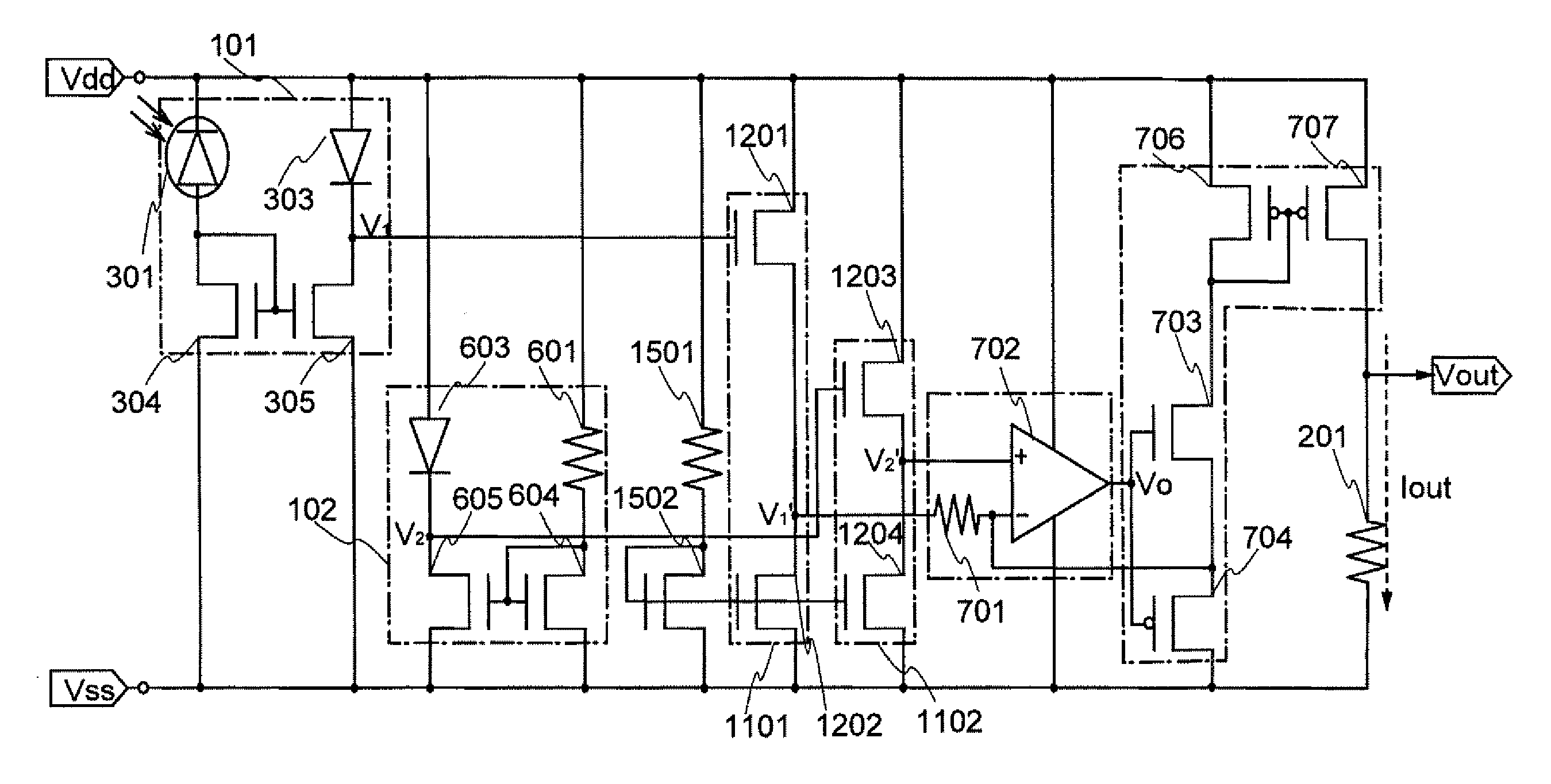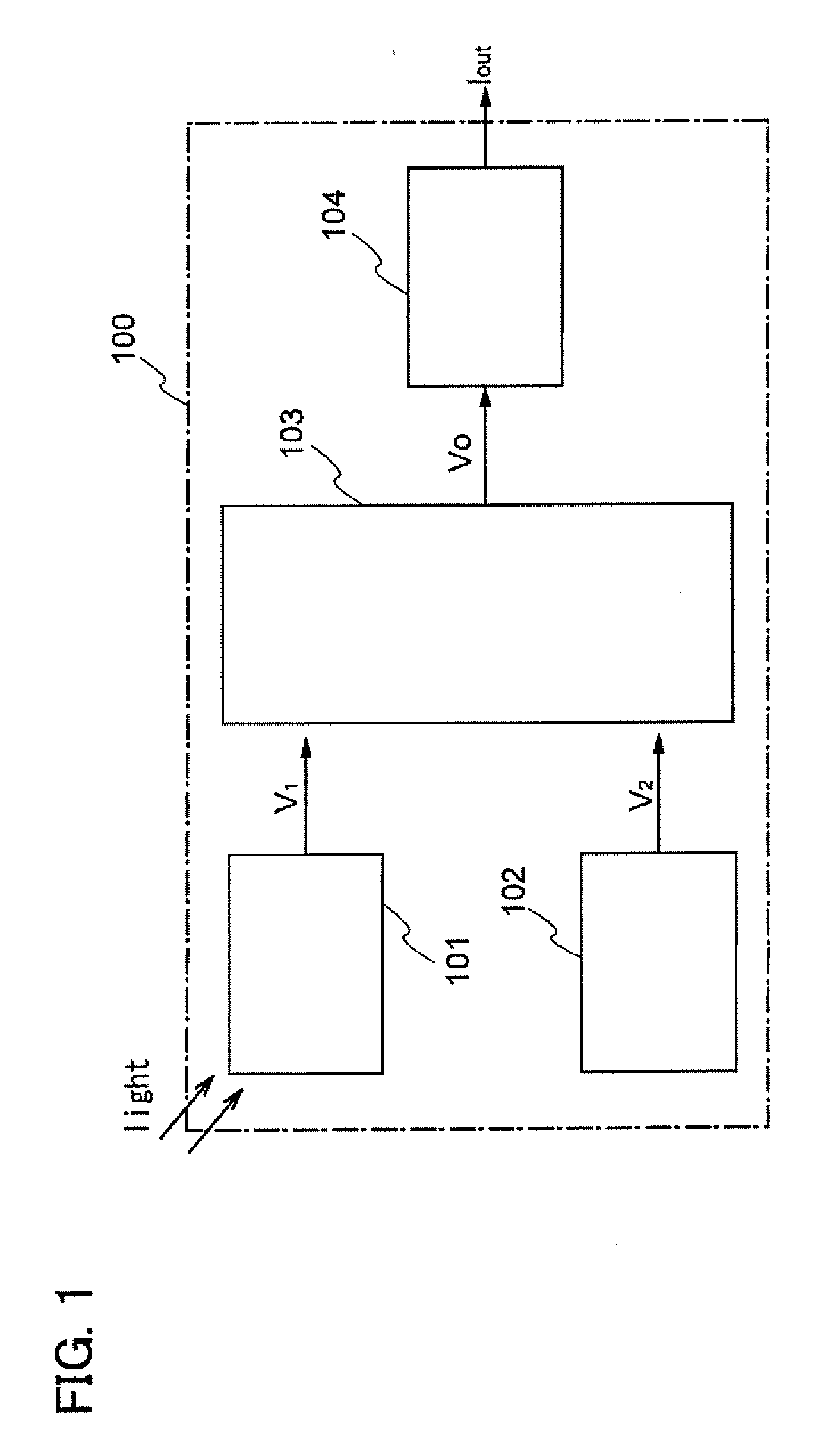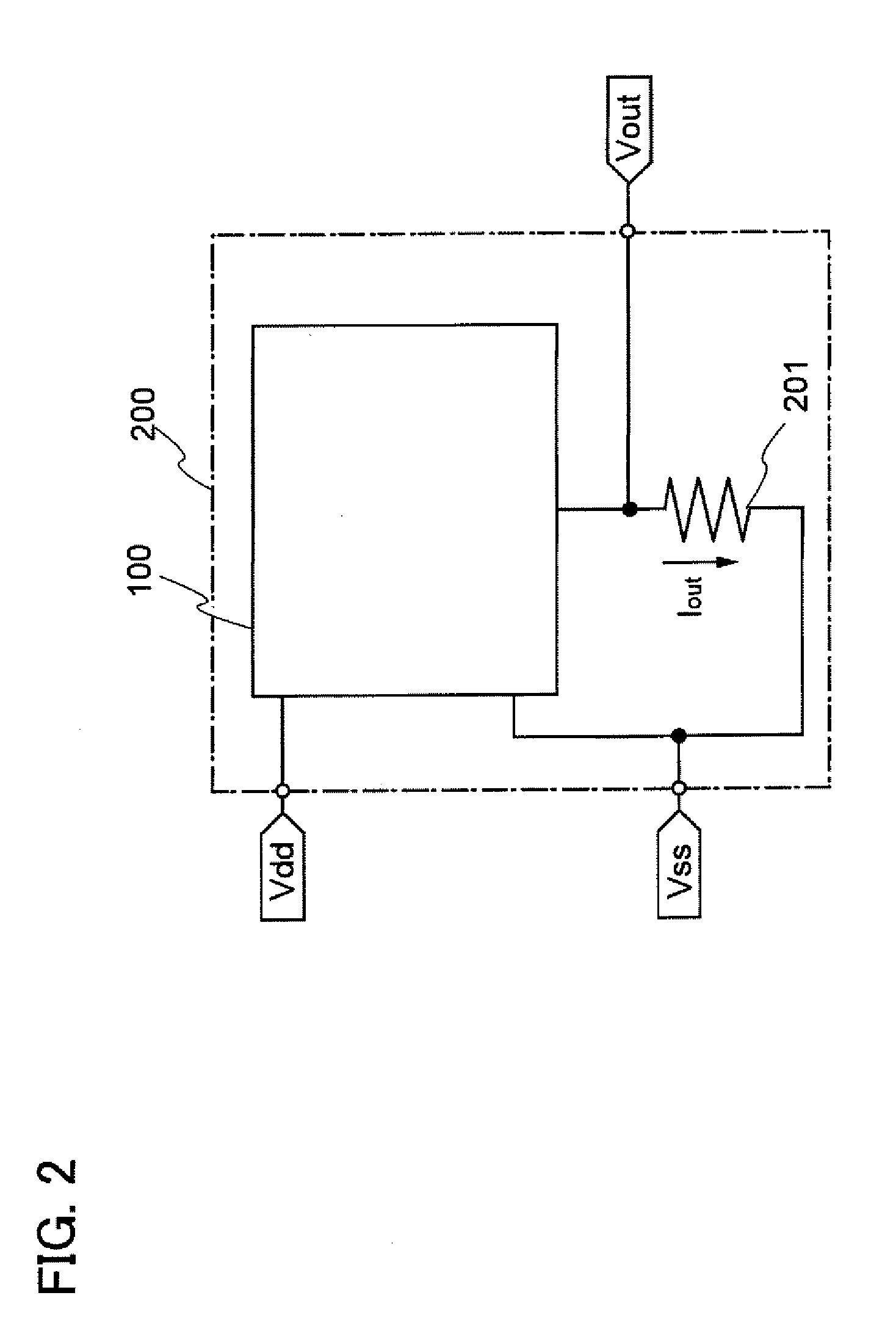Photoelectric conversion device and electronic device having the same
- Summary
- Abstract
- Description
- Claims
- Application Information
AI Technical Summary
Benefits of technology
Problems solved by technology
Method used
Image
Examples
embodiment 1
[0051]In this embodiment, the structure and the operation of a photoelectric conversion device of the present invention are described. Note that in the photoelectric conversion device of the present invention, which is described in this embodiment, a signal related to the amount of incident light, which is obtained from a photoelectric conversion element, is converted into a signal subjected to logarithmic compression and is output outside.
[0052]First, a block diagram of a photoelectric conversion device is described. A photoelectric conversion device 100 illustrated in FIG. 1 includes a photoelectric conversion circuit 101, a reference voltage generation circuit 102, an arithmetic circuit 103, and an output circuit 104. The photoelectric conversion circuit 101 is a circuit for outputting first voltage V1 subjected to logarithmic compression by one of terminals of a first diode element in accordance with photocurrent flowing to a photoelectric conversion element. In addition, the re...
embodiment 2
[0092]In this embodiment, a specific structure in the case where the first voltage V1 and the second voltage V2 are used as signals amplified in a source follower circuit instead of using the first voltage V1 and the second voltage V2 which are input to the arithmetic circuit 103 in the photoelectric conversion device 100 described in the above embodiment is described. Note that in this embodiment, portions described in Embodiment 1 are denoted by the same reference numerals as in Embodiment 1, and description thereof is omitted.
[0093]A photoelectric conversion device 1100 illustrated in FIG. 11 includes the photoelectric conversion circuit 101, the reference voltage generation circuit 102, the arithmetic circuit 103, the output circuit 104, a first amplifier circuit 1101, and a second amplifier circuit 1102. The photoelectric conversion device 1100 illustrated in FIG. 11 differs from the photoelectric conversion device 100 described in Embodiment 1 in that the first amplifier circu...
embodiment 3
[0100]In this embodiment, a layout example of each circuit is described with reference to a block diagram of a photoelectric conversion device. FIG. 14 is a block diagram of the photoelectric conversion device, which illustrates the layout of each circuit in the circuit illustrated in FIG. 12 in Embodiment 2. In the photoelectric conversion device 1100 illustrated in FIG. 14, the photoelectric conversion element 301, the resistor 601, the first diode element 303, the second diode element 603, the first amplifier circuit 1101, the second amplifier circuit 1102, the resistor 701, the operational amplifier 702, and the output circuit 104 are illustrated. Note that in FIG. 14, a terminal to which the high power supply potential Vdd is applied, a terminal to which the low power supply potential Vss is applied, and a terminal for outputting the voltage Vout obtained in the photoelectric conversion device to the outside are also illustrated.
[0101]As described in the above embodiment, in th...
PUM
 Login to View More
Login to View More Abstract
Description
Claims
Application Information
 Login to View More
Login to View More - R&D
- Intellectual Property
- Life Sciences
- Materials
- Tech Scout
- Unparalleled Data Quality
- Higher Quality Content
- 60% Fewer Hallucinations
Browse by: Latest US Patents, China's latest patents, Technical Efficacy Thesaurus, Application Domain, Technology Topic, Popular Technical Reports.
© 2025 PatSnap. All rights reserved.Legal|Privacy policy|Modern Slavery Act Transparency Statement|Sitemap|About US| Contact US: help@patsnap.com



